Occupation Artist Children Jane Ulbrich Role Artist | Name Margaret Keane Website www.keane-eyes.com | |
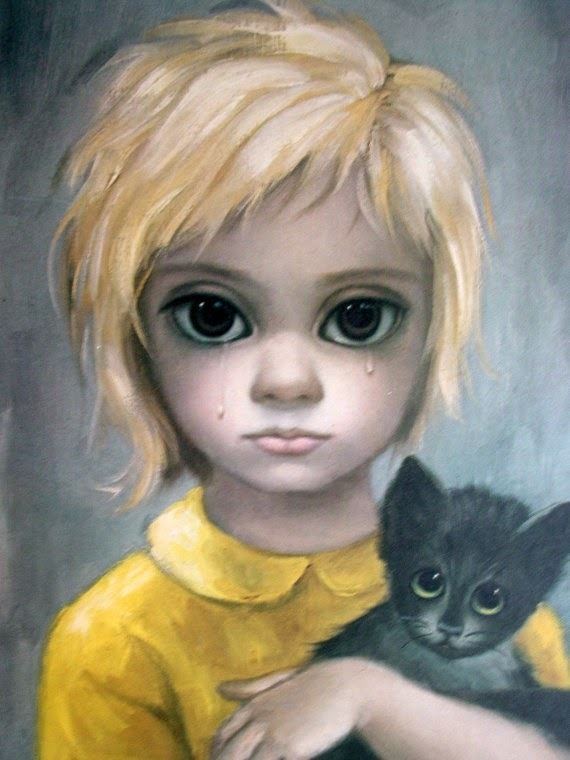 | ||
Full Name Peggy Doris Hawkins Other names Peggy UlbrichMDH KeaneMargaret McGuire Artwork Tomorrow Forever, The Stray, No Dogs Allowed Similar People | ||
Artist margaret keane in awe of amy adams portrayal in big eyes
Margaret D. H. Keane (born Peggy Doris Hawkins, September 15, 1927) is an American artist. Creator of the "big-eyed waifs", Keane is famous for drawing paintings with big eyes, and mainly paints women, children and animals in oil or mixed media. While the work achieved commercial success through inexpensive reproductions on prints, plates and cups, it has been critically dismissed as kitsch. One reviewer pointed to its ubiquity in discount stores: "They hung in Woolworth's, next to the velvet Elvis, or maybe it was Walgreen's, by the clowns." The work was originally attributed to Keane's husband, Walter Keane. After their divorce in the 1960s, Margaret soon claimed credit, which was established after an in-court "paint-off" in Hawaii. A resurgence of interest in Margaret Keane's work followed the release of Tim Burton's 2014 biopic Big Eyes. She maintains a gallery in San Francisco which boasts "the largest collection of Margaret Keane's art in the entire world." In light of the great gulf between her work's popularity and its critical lampooning, she has been called the "Wayne Newton of the art world."
Contents
- Artist margaret keane in awe of amy adams portrayal in big eyes
- Margaret keane painter behind tim burton s big eyes kqed arts
- Early life
- Career with Walter Keane
- Career after Walter Keane
- Style
- Personal life
- Media portrayal
- References

Margaret keane painter behind tim burton s big eyes kqed arts
Early life
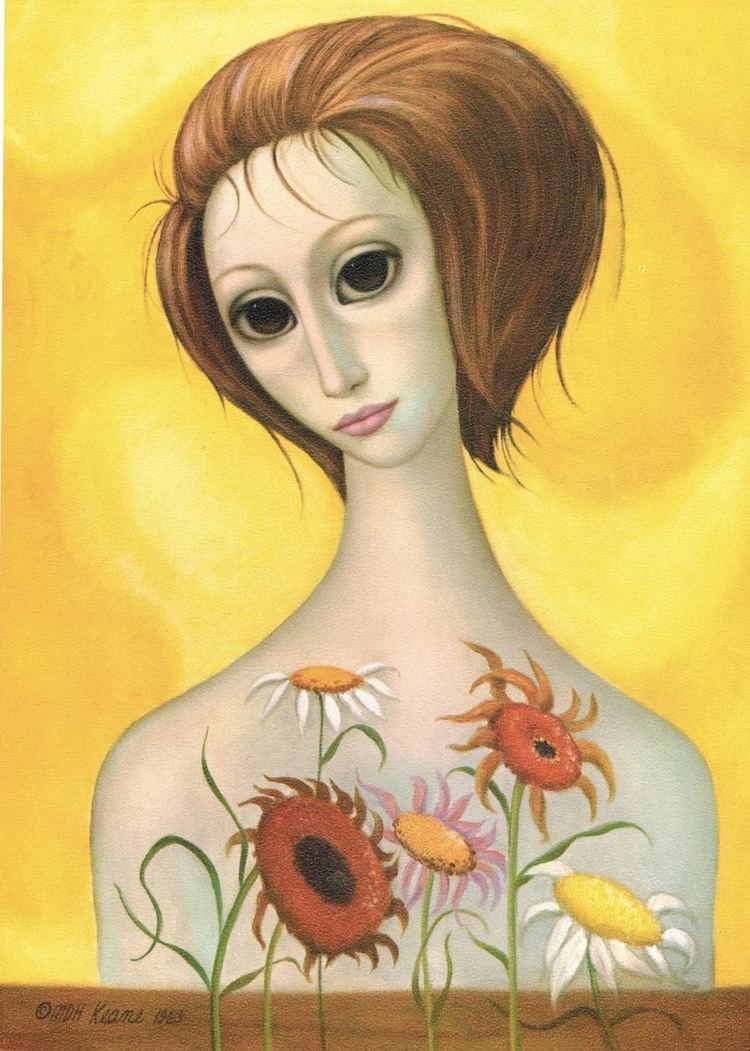
Keane was born in Nashville, Tennessee. When she was two, her eardrum was permanently damaged during a mastoid operation. Unable to hear properly she learned to watch the eyes of the person talking to her to understand them.
Keane started drawing as a child and at the age of 10 took a few classes at the Watkins Art Institute in Nashville. Keane painted her first oil painting of two little girls, one crying and one laughing, when she was 10 years old and gave the drawing to her grandmother. Keane still has the painting today. She was well known at the local church for her sketches of angels with big eyes and floppy wings.
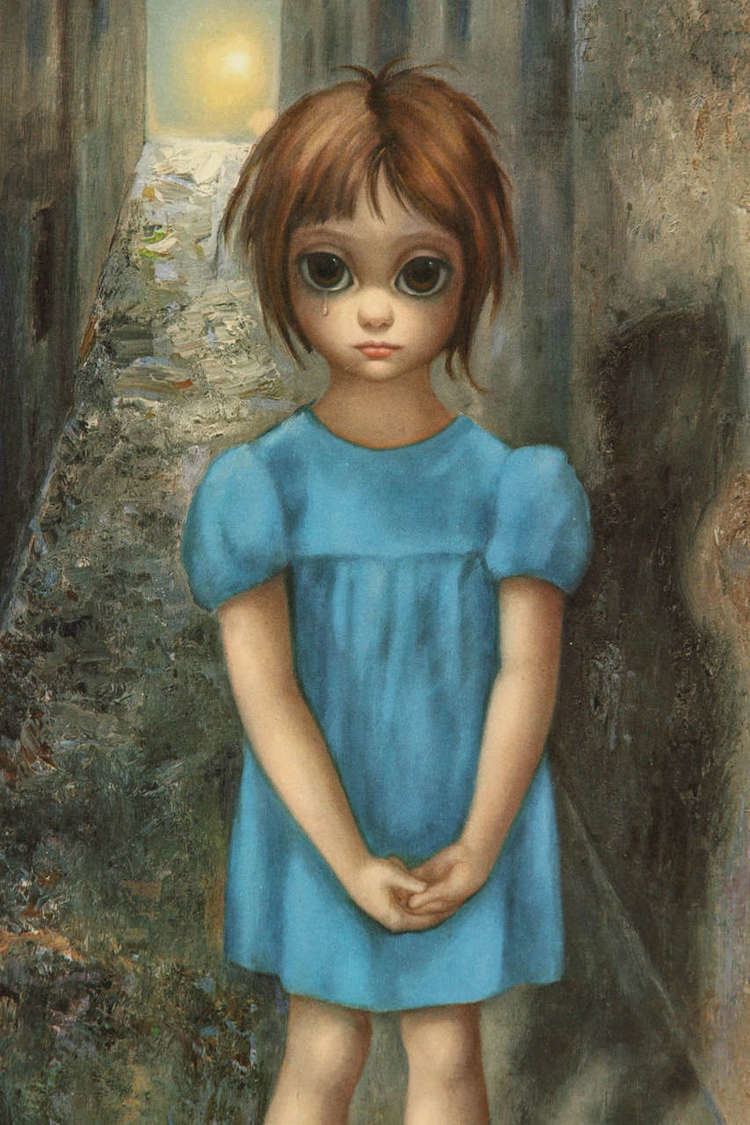
At the age of 18 she attended the Traphagen School Of Design in New York City for a year. She began work painting clothing and baby cribs in the 1950s until she finally began a career painting portraits. Early on, Margaret began experimenting in Kitsch. She worked in both acrylic- and oil-based paints, but her work was limited to women, children and familiar animals (cats, dogs, horses).
Career with Walter Keane
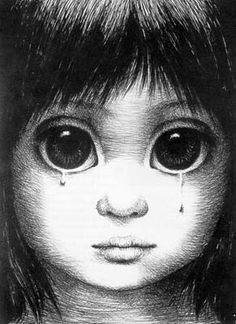
Some time in the mid-1950s, Margaret, married with a child, met Walter Keane. As Walter Keane told the story when he was at the height of his popularity, he saw her sitting alone at a "well known North Beach bistro and he was attracted by her large eyes. At the time Walter was also married, worked as a real estate salesman and painted on the side. He would later tell reporters, however, that he had given up his "highly successful real estate career" in 1947. Margaret found him "suave, gregarious and charming." The two married in 1955 in Honolulu.
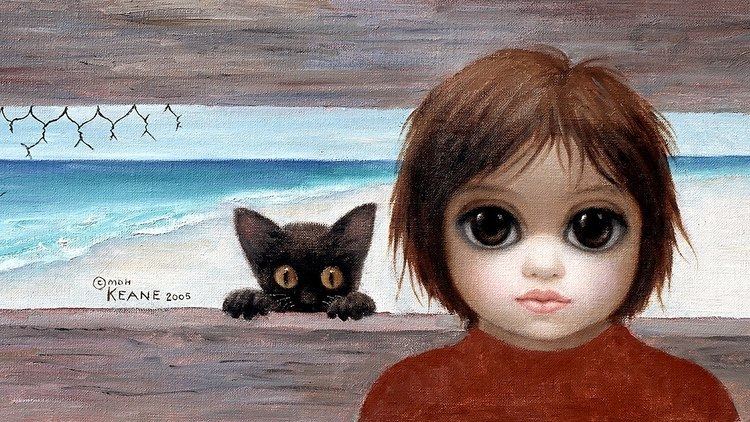
Margaret has said that he began selling her characteristic "big eyes" paintings immediately, but unknown to her, claimed it was his own work. The principal venue for his sales was the hungry i, a comedy club in San Francisco. When she discovered his deception, she remained silent. She later explained her behavior: "I was afraid of him because he [threatened] to have me done in if I said anything." But Margaret even publicly acknowledged him as the artist, while later claiming it was "tortuous" for her. She rationalized the situation on the ground that "[a]t least they were being shown."

In 1957 Walter began exhibiting the "big eyes" paintings as his own. In February the work was shown on a wall of the Bank of America in Sausalito. He took nine paintings to New Orleans, which he claims to have sold during Mardi Gras. That summer Walter arranged for a showing at the Washington Square Outdoor Art show in New York City. Displaying his talent for promotion, during that trip he arranged for a showing in August at the Sheraton Hotel in Chicago and another in a small East Side gallery for the same month.
Walter began developing a mythology about himself and to a lesser extent Margaret. He eventually began promotions of "The Painting Keanes."
In the 1960s, Keane became one of the most popular and commercially successful artists of the time. Andy Warhol said "I think what Keane has done is just terrific. It has to be good. If it were bad, so many people wouldn't like it." On the other hand, when one of the exhibitors at the 1964 World's Fair in Flushing, Queens, announced that it would exhibit Keane's Tomorrow Forever, a painting of a countless number of doe-eyed waifs from the horizon to the foreground where they lined up on a staircase, the New York Times's art critic expressed outrage, calling it "[t]he most grotesque announcement yet from the New York World's Fair." He described Keane as a painter celebrated "for grinding out formula pictures of wide-eyed children of such appalling sentimentality that his product has become synonymous among critics definition of tasteless hack work. [The painting] contains about 100 children and hence is about 100 times as bad as the average Keane." Robert Moses, stung by the resulting criticism, prevented the painting from being displayed at the Fair.
During this time her artwork was sold under the name of her husband, Walter Keane, who claimed credit for her paintings. At the height of the artworks' popularity, she was painting non-stop for 16 hours a day.
Career after Walter Keane
In 1970, Keane announced on a radio broadcast she was the real creator of the paintings that had been attributed to her ex-husband Walter Keane. After Keane revealed the truth, a "paint-out" between Margaret and Walter was staged in San Francisco's Union Square, arranged by Bill Flang, a reporter from the San Francisco Examiner and attended by the media and Margaret. Walter did not show up. In 1986, she sued both Walter and USA Today in federal court for an article claiming Walter was the real artist. At the trial, the judge famously ordered both Margaret and Walter to each create a big-eyed painting in the courtroom, to determine who was telling the truth. Walter declined, citing a sore shoulder, whereas Margaret completed her painting in 53 minutes. After a three-week trial, the jury awarded her $4 million in damages. After the verdict Keane said "I really feel that justice has triumphed. It's been worth it, even if I don't see any of that four million dollars." A federal appeals court upheld the verdict of defamation in 1990, but overturned the $4 million damage award. Keane says she doesn't care about the money and just wanted to establish the fact that she had done the paintings.
The artworks Keane created while living in the shadow of her husband tended to depict sad-looking children in dark settings. After she left Walter, moved to Hawaii and, after years of following astrology, palmistry, handwriting analysis and transcendental meditation, became a Jehovah's Witness, her work took on a happier, brighter style. "The eyes I draw on my children are an expression of my own deepest feelings. Eyes are windows of the soul", Keane explains. Many galleries now advertise her artworks as having "tears of joy" or "tears of happiness". She described her subjects thus: "These are the paintings of children in paradise. They are what I think the world is going to look like when God's will is done."
Hollywood actors Joan Crawford, Natalie Wood and Jerry Lewis commissioned Keane to paint their portraits. In the 1990s, Tim Burton, a Keane art collector and director of the 2014 biographical film Big Eyes about the life of Margaret Keane, commissioned the artist to paint a portrait of his then-girlfriend Lisa Marie. Keane's art was bought and presented to the United Nations Children's Fund in 1961 by the Prescolite Manufacturing Corporation. Keane's big eyes paintings have influenced toy designs, Little Miss No Name and Susie Sad Eyes dolls, and the cartoon The Powerpuff Girls.
Style
Keane's paintings are recognizable by the oversized, doe-like eyes of her subjects. Keane says she was always interested in the eyes and used to draw them in her school books. She began painting her signature "Keane eyes" when she started painting portraits of children. "Children do have big eyes. When I'm doing a portrait, the eyes are the most expressive part of the face. And they just got bigger and bigger and bigger", Keane said. Keane focused on the eyes, as they show the inner person more. Keane attributes Amedeo Modigliani's work as a major influence on the way she has painted women since 1959. Other artists who influenced her in use of color, dimension and composition include Van Gogh, Gustav Klimt and Picasso. Despite her claims to fine art, she has never been a critical success; instead she remained "known for her sticky-sweet paintings of doe-eyed waifs that became the middlebrow rage in the late 1950s and 1960s, then kitschy collectibles of high-ironic style decades later."
Personal life
Keane's first husband was Frank Richard Ulbrich; they had a daughter together. She married Walter Keane in 1955. In 1964, she left Walter and divorced him in 1965, and relocated from San Francisco to Hawaii. In Hawaii Keane met Honolulu sports writer Dan McGuire and married him in 1970. She credits McGuire for helping her to become less timid and afraid after her divorce from Walter. Keane lived in Hawaii for over 25 years, before returning to California in 1991. She resides in Napa County, California.
